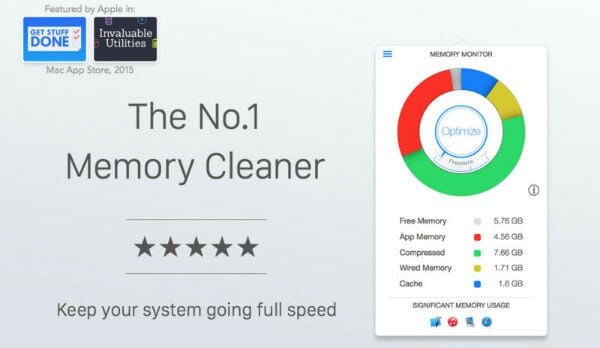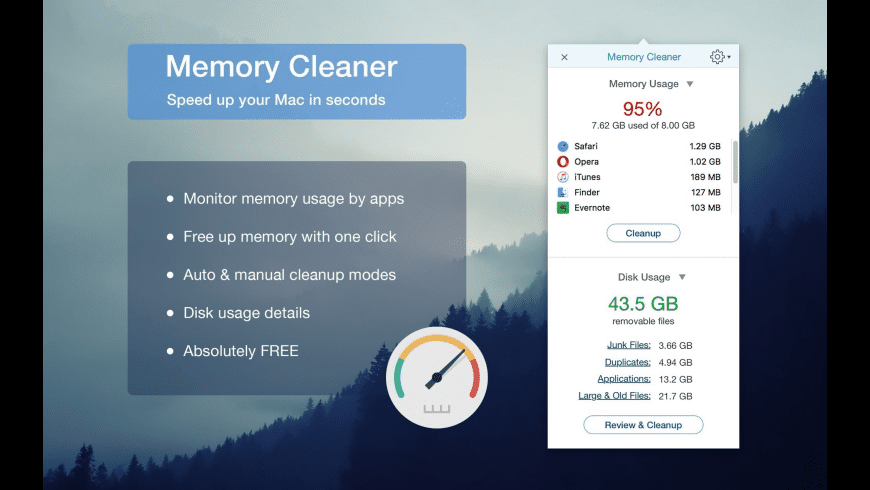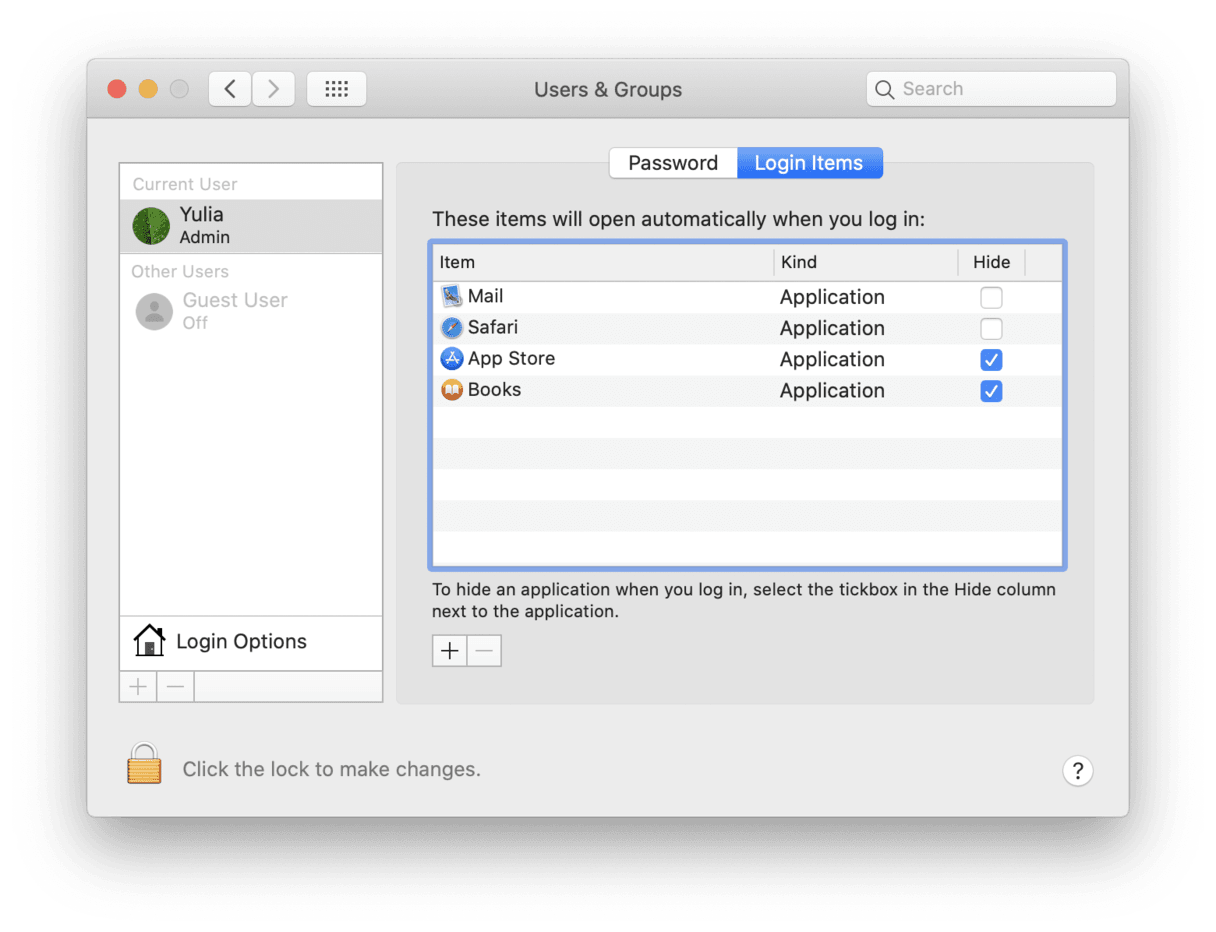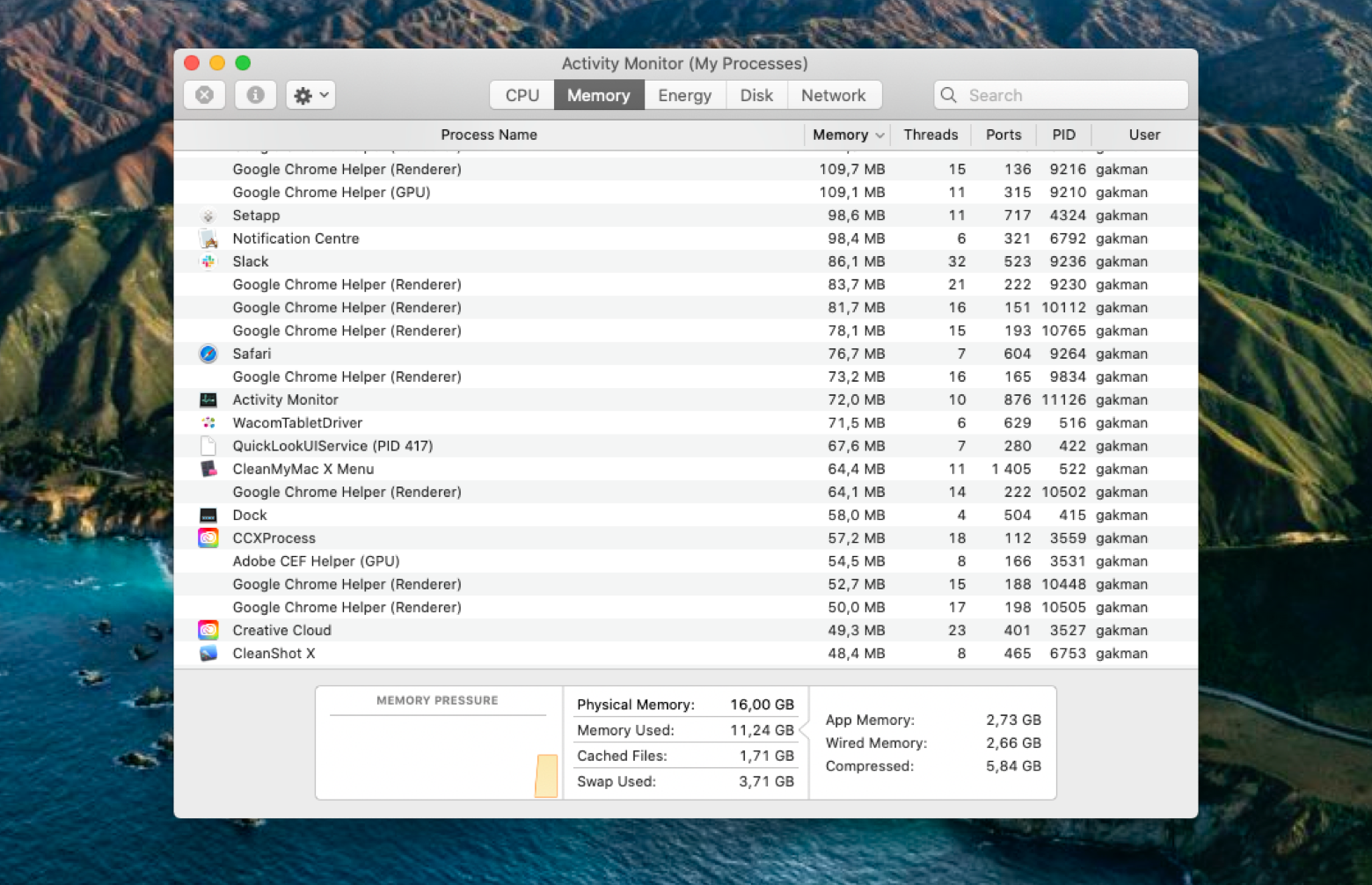The disk has an operating system (macOS Big Sur), and user data (apps, etc). And since you only have one disk, this is your startup disk: all 500GB. A Mac with two disks will have the storage divided between them. The Mac drive with the OS on it is the startup disk while the other drive is just used for storage of files.
While reading thru some Apple forums, I found a question people asked a lot. While most responses were generally correct, I felt that all answers lacked some important details and as a result confused people even more. The purpose of this article to clarify those details as much as possible.
- Apr 24, 2012 Using the ‘purge’ command when Free memory starts to run low prevents the OS from having to use swap by converting (most) inactive memory to free memory. In my experience keeping my Mac from swapping to the disk (and causing Page-Outs) is key to maintaining optimal performance. To all the naysayers preaching about how wrong this advice is.
- Memory Cleaner For Mac; Memory Cleaner Mac OS X First. Try These Three Ways to Free Inactive Memory on Mac OS X First, lets clarify what inactive memory is on Mac. Inactive memory is used by recently active and terminated applications. The system of your computer saves this memory in case you want to. Disk Drill: The best data recovery software.
First, let’s answer the first question from the title of the post.
What is wired memory?
Wired memory on Mac is reserved for the macOS kernel and its data structures, and it cannot be paged out. The normal size of the wired memory is around 2GB. User applications add on average 1MB per instance, and too many running programs can contribute to high wired memory usage.
Now, let’s dive into more technical details.
When the Mac suddenly becomes too slow, the laptop owners start browsing forums and learn to check the memory tab in Activity Monitor.
The screenshot above which I made after rebooting the Mac indicates that my Mac has 8GB of Physical Memory and 2.33GB of it is in the Used Memory bucket. The used memory then consists of App Memory (1.2GB) and Wired Memory (1.13GB).
Why do people ask about Wired memory?
Wired memory is a memory that can’t be compressed or paged out to your startup drives, so it must stay in RAM. Moreover, other processes can’t borrow it.
The key phrase here is “can’t be paged out.”
Before we proceed further let me explain what paging is.
The architecture of modern computers was designed in the 20th century. Any computer has three main parts: processor, RAM (random access memory) and storage (disk, tape, punched cards, etc.).
The processor works directly with RAM because the latter is thousands of times faster than HHD or SSD. Besides the speed, there are two more differences between RAM and HHD:
- RAM needs constant power. When a computer shuts down or restarts, the data in RAM gets wiped. Hard drives preserve data even when the computer is off.
- RAM is much more expensive. For instance, for an additional $200, you can buy either 8GB more RAM or 128GB more SSD when purchasing a new MacBook Pro.
The last point is significant. If RAM was cheap, then Apple would stuff its laptops with tons of memory, and nobody would care to read this article. But since its more expensive than disk storage computer engineers invented memory swapping or paging.
Let me use a whiteboard analogy.
Imagine, you work in a startup company which rents couple desks in a coworking space. Amenities in a coworking environment include unlimited coffee and beer, Wi-Fi, bike storage, and a whiteboard.
When Team A needs to brainstorm the Next Big Thing, they go to the whiteboard and start writing down some ideas. Unfortunately, there is only one whiteboard on the floor. Team B wants to brainstorm their TNBT too, and they also need some whiteboard space.
Team A graciously agrees to share some of the whiteboard space. Then another team comes, and another. With each team, the amount of free space shrinks.
When the available area gets too tight, teams decide to write down some of their ideas on the paper and clear the piece of the whiteboard for new ideas. When they need to access their old ideas, they search thru past papers and copy them to the whiteboard.
Memory management in modern operating systems works similarly. In this case, a whiteboard is a physical memory which is shared by apps (teams). When apps request additional memory, and there is no more free space, the OS checks all memory pages.
The OS tries to find ones that were not used recently and copies them to the disk. Apps do not write down unused memory like in whiteboard example, the OS does. When the app needs back that data, the OS reads it back to RAM from the disk.

In theory, more disk storage the computer has more RAM can be extended by paging. The reverse is also true, in case of little or no free disk space swapping is almost impossible.
This wonderful mechanism, however, has a significant flow: disk is thousands of times slower than RAM. When there is no enough memory, the system keeps paging in and out data continuously, which causes so-called disk thrashing.
In the latter case, the computer, instead of executing programs keeps moving data making the life of a computer user miserable.
So what it has to do with wired memory? Continuing the analogy, imaging the coworking administration decided to block the quarter of the whiteboard and write a schedule of events on it. Plus they disallowed any team to wipe off the schedule.
More space the administration takes less whiteboard space teams can use. More wired memory the macOS uses fewer memory apps can share.
By the way, if you were wondering what represents Cached Files in the first screenshot, it’s a memory that was used by an app which was recently terminated. It’s as if Team A decided to go to a nearby restaurant to grab some lunch.
/001-understanding-compressed-memory-os-x-2260327-f3fc233df7f4497eb7dbc03b1e6b6df6.jpg)
If by the time they come back, their ideas are still on the whiteboard, they can start from where they left. If not, then they have to copy everything from their papers back to the whiteboard.
Cached Files is a mechanism which macOS uses to speed up the recently closed applications in case if a user wants to start them again. If meantime another app needs more memory, the OS will claim it from Cashed Files.
So, if you see too much Cached Files don’t worry, it’s same as free memory.
If you need proof, try following in Terminal:
- In the Terminal app type sudo purge and hit Enter
- Type in the admin password
When I ran this command, the only thing that has changed in Activity Monitor was Cached Files: its size dropped from 1.89GB to 594MB.

Is it ok to use sudo purge? There is no harm because all it does is clear unused memory. But it also doesn’t do anything valuable. macOS can release unused memory when apps ask for more.
What’s included in the Wired memory?
According to Apple documentation, wired memory is a part of memory reserved for OS kernel and its data structures. Following kernel objects belong to the wired memory: Virtual Memory objects, virtual memory and I/O buffer caches, various drivers.
User applications do not directly work with the hardware; they send requests to kernel drivers and those, in turn, perform hardware operations. For instance, the internet browser does not send pixels to the MacBook screen. Instead, it sends requests to the video driver, which then changes colors of pixels on the screen.
However, user apps can also influence how much of wired memory is used, although indirectly.
Following is a table with some (not all) types of objects user apps indirectly create in the wired memory. Note that the data in the table is outdated, but it at least gives some idea why the wired memory changes every time we load or unload an app.
Let me explain some of the objects in the table on the example of the Google Chrome browser. When I first started Chrome, it created several processes: one Google Chrome and 8 Google Chrome Helpers. The wired memory immediately jumped to 1.35GB.
Each line in the Activity Monitor is a process: an application instance. Each process is a collection of threads and threads perform actual work on the computer. If data in Table 1 was current, we could count that Google Chrome process added 16KB to store process data, plus 46 * 21KB = 966KB for threads.
Chrome is an interesting app. Every time you open a new tab, it starts additional helpers. Each helper is a separate process, and each process spawns numerous threads.
When I opened one tab, the number of Chrome helpers jumped from 8 to 16. After opening a second tab the number of helpers increased to 24, and after third to 26. After opening three tabs, the wired memory size increased to 1.61GB.
As you can see each process indirectly increases wired memory because macOS has to record those threads somewhere.

And this is not all. While Apple claims that wired memory is reserved for kernel and some objects which describe user processes, some applications can tap into the wired memory directly.
For instance, if you ever used virtualization software such as Parallels Desktop or VMWare, you should know that they use the wired memory directly to improve the performance.
If you think about this, it makes perfect sense. Virtual frameworks are designed to act like real machines so that OS running inside can handle the memory the way they always do. For instance, if you run macOS virtual machine on Mac, the macOS will create its version of wired memory inside VM.
Persona 5 license key.txt. After digging a bit in the Kernel Programming Guide, I found that applications can allocate memory in the kernel by calling kmem_alloc_wired function instead of regular alloc.
Now, what all of this means in practice?
How to free up memory on Mac
There are two main reasons for the high usage of wired memory:
1) Some applications modify the kernel and use wired memory deliberately. Examples are drivers and applications working on the kernel level such as antiviruses, or virtual machines. If for instance, there are some widgets in the Mission control, turn off those you don’t need.
In the case of virtual machines, the remedy is to limit the memory configuration. For example, if the Windows VM is configured to use 8GB of RAM lower it to 4GB.

2) When too many applications are active, they still use RAM. Unlike Windows, where clicking on close button unloads the app, in macOS, the app continues staying in memory. You can tell them by a little dot under the icon in the Dock.
Use Command and Q key combination to quit the app altogether. If some apps still stay in the memory rebooting the computer sometimes can fix the problem.
And finally, high wired memory usage is not always a sign of a problem. In the following example used memory was almost 31GB on a 32GB Mac, and wired memory accounted for the bulk of used (26.61GB).
However, look at the left side of the screenshot: Memory Pressure. Memory Pressure section in Activity Monitor can have one of 3 colors like a traffic light: green, yellow, and red. If memory pressure color is red, then more RAM is needed. In case if it’s green, then there is enough memory for the current load.
Wired memory does not get released immediately when an application quits. It gets cleared by a garbage collection process which may take some time, and during this time the wired memory size may be too high.
Resources:
Image credit: Flikr
In today’s era of multi-terabyte hard drives and online storage, many of us don’t keep as close an eye on our disk usage as we used to. Still, even the largest drives fill up eventually. If you don’t know how to check your disk space use on your Mac, here’s where to look.
Options 1 and 2: From the Finder
The Finder gives you a couple ways to see how much free disk space you have. These are the easiest ways.
Preview your storage device. In macOS, if you select and item in the Finder and press the spacebar on your keyboard, you get a preview of the item. For example, if you select a text document and then press the spacebar, you can see what’s in the document without actually opening it.
You can use preview to check your storage device’s capacity. Here’s how.
1. Select the storage device on the Desktop. (To make your storage device appear on your Desktop, go to the Finder and select Finder > Preferences, click on General, and modify the setting for Show these items on the Desktop.) Or open a Finder window, look in the left column, under the Devices heading, and select the storage device.
2. Press the spacebar. You should see a window open that shows the capacity of your storage device and the available space.
3. To close the window, press spacebar again, or press Command-W, or click on the close-window icon (the circle X) in the upper left.
Mac Os Free Memory Download
Finder window status bar. If you would like to have an overview of your free disk space at all times from the Finder, you can turn on the Finder’s status bar.
1. Open a Finder window if you don’t have one open already (click the Finder’s Dock icon or go to File > New Finder Window).
2. Open the View menu and select Show status bar. This will show you how many items are in the current folder, and if you’re viewing a folder on your hard drive (such as your Applications or Documents folder), you’ll also get a readout of your hard drive’s free space.
Options 3: Get Info
1. Find your hard drive in the Finder and select it. If it appears in the Finder window sidebar or on the Desktop (it doesn’t by default—go to Finder > Preferences to change that), click your hard drive’s icon in either of those spots. If your hard drive icon doesn’t appear there, go to Go > Computer, then click the hard drive icon under Devices.
Check Mac Memory Usage
2. Click the File menu, and select Get Info, or press Comand-I on your keyboard.
The Info window shows the capacity, available space, and used space, as well as other information. Adobe cc 2020 mac crack reddit.
Option 4: About This Mac
In recent versions of macOS (Yosemite or later), you can easily check your disk usage from the About box.
Free Up Memory On Mac
1. Open the Apple menu, then select About This Mac.
2. Click the Storage tab in the toolbar to see how much disk space you have available. (On OS X Mountain Lion or Mavericks, click the More info button, then click Storage.)
You also get a simplified overview of what sort of files are eating up your storage space.
Mac Os Free Download
Option 5: From Disk Utility
You can also view your free disk space from your Mac’s Disk Utility app. Open Spotlight by clicking the magnifying glass in the upper-right corner of the screen, then type Disk Utility in the search box that appears. Once Disk Utility comes up in the list and is highlighted, press the Enter key. Disk Utility is also found in Applications > Utilities.
Once Disk Utility opens, select your hard drive’s name from the list. You can see your drive’s capacity, its available space, its used space, and other info. You can also check the free space for any drive you have connected to your Mac from this window, be it a USB flash drive or external hard drive.